
Content Creation: The What, Why and How
Content creation is a core part of every brand’s marketing strategy (or at least it should be). But its actual execution can take many forms. There are several types of content creation, and brands definitely don’t have to go it alone when it comes to developing content to engage their audiences and attract new customers.
In fact, the overwhelming majority — 86% — of businesses currently outsource their content creation in some way.
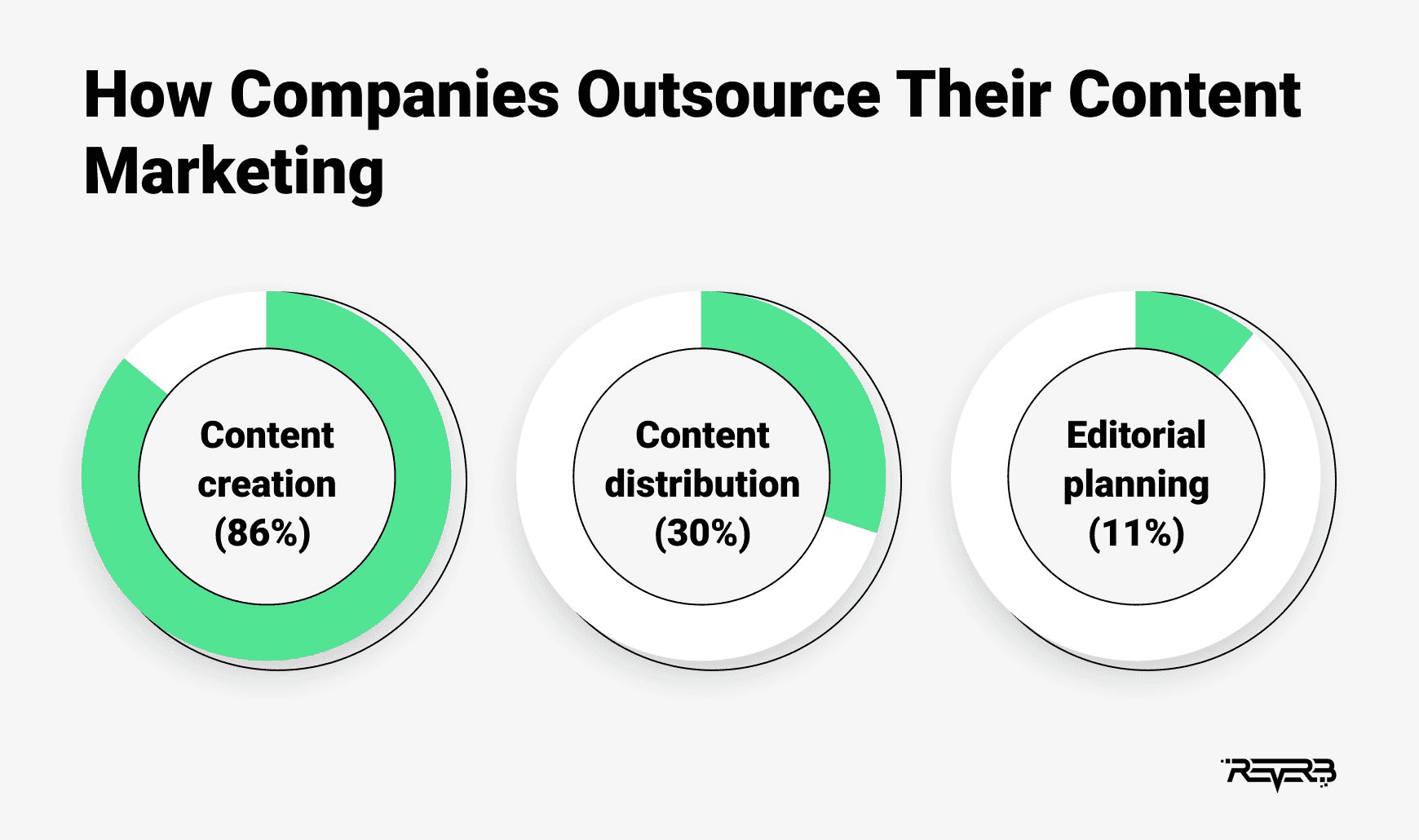
But that doesn’t mean in-house content creation is dead (far from it) or that outsourcing has to be an all-or-nothing approach.
In the sections that follow, we’ll walk through what content creation entails, why it’s so critical for brands today, the various approaches for executing it on an ongoing basis, and how to know which approach is right for your business.
Quick Takeaways:
- Content marketing earns more leads and conversions than traditional marketing methods at a fraction of the cost.
- To determine the best approach for your business, you need to evaluate the maturity of your current strategy, the makeup of your internal team, and your content marketing budget.
- Keyword research and SEO optimization is essential to create content that’s relevant to your customers.
- Aligning content to the buyer journey ensures customers receive the right content at the right time.
What Does Content Creation Involve? Why Does It Matter?
Content creation is the development of high-value assets that power your content marketing strategy and other lead generation and sales efforts. It encompasses many types of content, including but not limited to:
- Blog articles
- Videos
- Ebooks/whitepapers
- Emails
- Social media posts
- Infographics
- Guides/checklists
Every company needs to be creating content. Today, both B2B and B2C buyers are doing the majority of their brand discovery and research online. Content is what represents your brand and builds an initial connection with potential customers during this time.
When created with SEO in mind, content is also what captures the attention of Google’s web crawlers and gets your website ranked on Google SERPs, significantly increasing your company’s online visibility and brand awareness.
Content marketing has now far and away proven to be the most effective marketing method for brands. It earns 3X the leads and 6X the conversions at a fraction of the cost compared to other types of traditional marketing.
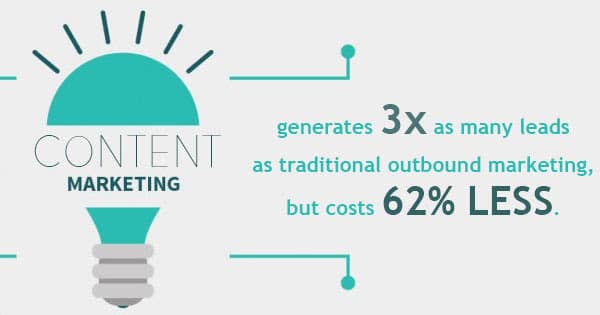
Image Source: Sectorlink
Today, almost all brands know the importance of incorporating content creation and content marketing into their strategies. Executing it, however, is a bit more complicated.
For starters, content creation is time consuming. Writing a single blog article takes 3-4 hours, and the best performing companies publish 16+ articles per month. That’s more than 60 hours of content creation related to blogging alone.
Content creation also requires a wide range of skill sets. SEO expertise is needed to get content ranking on Google SERPs. Certain types of assets require graphic design skills or even video production experience. The writing itself also requires specialized experience depending on the type of content asset being created. And in many cases, the people with the most knowledge (like C-level execs or technical experts) are usually not the best people to do the actual writing.
Companies take varied approaches to getting content created at the frequency, volume, and quality needed to execute an effective content marketing strategy. Some handle it totally in-house while others outsource completely. In many cases, companies use a hybrid approach for more flexibility.
In the next section, we’ll explore the 4 main types of content creation methods.
Different Approaches to Content Creation
Is your brand creating content but not seeing the results you expected? Are you wondering if your content is earning results at all? Are you just starting to build a new content marketing strategy?
If your answer to any of those questions is yes, you’re probably wondering how to create content that your customers won’t just read but will really love.
It’s a great question, and one that (in my opinion) marketers don’t ask enough. Instead of just churning out content to check a box or climb the Google rankings, is it possible to create content that your customers actually love to read? That they’ll even save and share?
We’ve got good news: yes, it is possible.
To do it, you need a few things:
- Well-defined goals
- A deep understanding of your audience
- Alignment with your buyer journey
- Visuals and high shareability
- A process for monitoring performance results
- A plan for using insights to improve your content
There are four ways to go about doing these things:
In-house
In-house content creation means all content is created by your own internal marketing team. The obvious advantage to this approach is that you have total control of and visibility into the content creation process. The writers, designers, and marketing strategists working on your content are all intimately familiar with your brand. In-house content creation can also save you money in that it doesn’t require paying external contributors.
But it also comes with some potential pitfalls. If you don’t have the right expertise on your internal team, you risk spending a lot of time, effort, and resources on content that doesn’t earn the ROI you expect.
Hiring and maintaining an in-house team can also get expensive. Full-time employees come with salary, benefits, and equipment expenses. If you don’t already have a team in place to create content, building one will likely be more expensive than outsourcing to an agency or freelance writers, which we’ll cover in the next sections.
Agency outsourcing
Hiring a content marketing agency is the most comprehensive approach to outsourcing and is a great option for businesses that recognize the importance of content creation but don’t have the resources to do it in-house. Content marketing agencies typically offer a managed services model that means they handle content creation as well as things like SEO strategy, site audits, competitive research, and performance reporting (these are just a few examples).
The perceived drawback of working with a content marketing agency is that it’s expensive. And it is true, outsourcing to an agency comes with a significant expense.
But it’s important to look at agency outsourcing with a 360 degree view. In short, you get out of your content strategy what you’re willing to put in. If you don’t have the resources to effectively execute content creation and strategy in-house, you’ll earn higher ROI by investing in an agency to help you do it.
Freelancer outsourcing
Another way to outsource is to hire freelancers to execute projects for you. Today, platforms like Upwork and Fiverr make it easier than ever to find and hire freelancers with the right skills and experience for your projects. You can hire writers, designers, editors, video producers and more with flexible terms and rates.
If you have the right team to set and manage your content strategy but need support on execution, freelancing might be the approach for you. That said, it’s important to consider the management requirements that come along with hiring freelancers. It requires active management to help freelancers achieve the right voice, tone, or design aesthetic for your brand (not to mention keeping everyone on deadline).
If you’re going to hire freelancers to help execute content creation and strategy, make sure you have someone (or multiple someones) dedicated to keeping things running smoothly.
Hybrid
Last but not least is a hybrid approach to content creation. This method is just how it sounds: it combines in-house content creation, agency outsourcing, and freelancer outsourcing depending on the business’s current needs.
For example, perhaps blogs are written and published in-house, but ebooks, infographics and other designed assets are handled by an agency. Maybe you hire an agency to help you develop and outline your strategy, then hire freelance writers to handle the actual content creation.
The takeaway is that businesses use hybrid approaches to remain flexible and meet changing needs related to content. The drawback to this method is that it can get a bit messy and hard to manage. It’s also more difficult to track performance metrics and determine content ROI when there are so many separate moving parts.
Which Content Creation Approach Is Right for You?
There are clear advantages and potential drawbacks to each of the types of content creation. There is no one-size-fits-all approach, and the biggest determiner of success is typically how well the approach aligns with the resources and needs of the company.
So how do you know which one is best for your business? There are a few key factors to consider:
- Internal resources – What is the current makeup of your content team? What is the reasonable bandwidth for content creation? Do they have the right knowledge and experience to create content that will perform?
- Content marketing maturity – Do you already have a content strategy in place? If so, is it working? Do you need support with strategy development or strictly content creation?
- Strategy – What types of content are included in your current content strategy (i.e. do you mainly publish blogs and social content? Do you create a high volume of downloadable assets like ebooks? Do you plan to publish video content? etc.)
- Budget – What is your budget for spending on content creation?
When you know where you stand with your current strategy, your future plans and needs, and your spending ability, you’re best able to pursue the type of content creation that will earn you the most ROI.
Why You Need Great Content
The truth is this: your customers are turning to search engines for information about your brand before they’re coming to you directly. 81% of consumers today say their brand research starts online, and 93% of all online experiences begin with search. Your content is often the first touchpoint your customers will have with your brand.
And if they don’t love it? Well, they’ll likely look elsewhere.
The digital marketing landscape is also crowded. Content creation alone is not enough to get noticed or to attract new customers. Your content needs to be well-written, well-designed, high-value, and targeted to the right audience. It needs to address the specific needs of your ideal customers.
In other words: you need to know how to create content your audience loves. In the next section, we’re going to walk through the specific steps you should take to start doing just that right away.
How to Create Content Your Customers Will Love
People are over-complicating a very simple issue. The goal of all content creation is to make stuff that people like and enjoy ourselves in the process. That’s it. It’s funny when you think about content marketing in these, the simplest of terms.
Once you strip away all the industry jargon, you’re left with a community of people trying to make awesome things for important people. So why don’t we spend more time making our content truly awesome to consume?
Here are some ways to do that.
Know your goals
You probably know what your overall business goals are, and that’s a great start. But do you know what you’re trying to achieve with your content? The thing is content goals are different for every company. There are some common goals, sure — higher Google rankings and more organic traffic, for example, should always be on your list.
But other goals may be more important to some companies than others. Lead generation, for example, is a top priority for most B2B companies. For a B2C ecommerce company, driving direct sales through your website is probably at the top of your list. For a newer startup, brand awareness may be the most important goal.
The key is to know what’s most important to your company so that your content aligns with those goals specifically. To set detailed goals that keep you accountable and drive results, you can use the SMART goals framework.
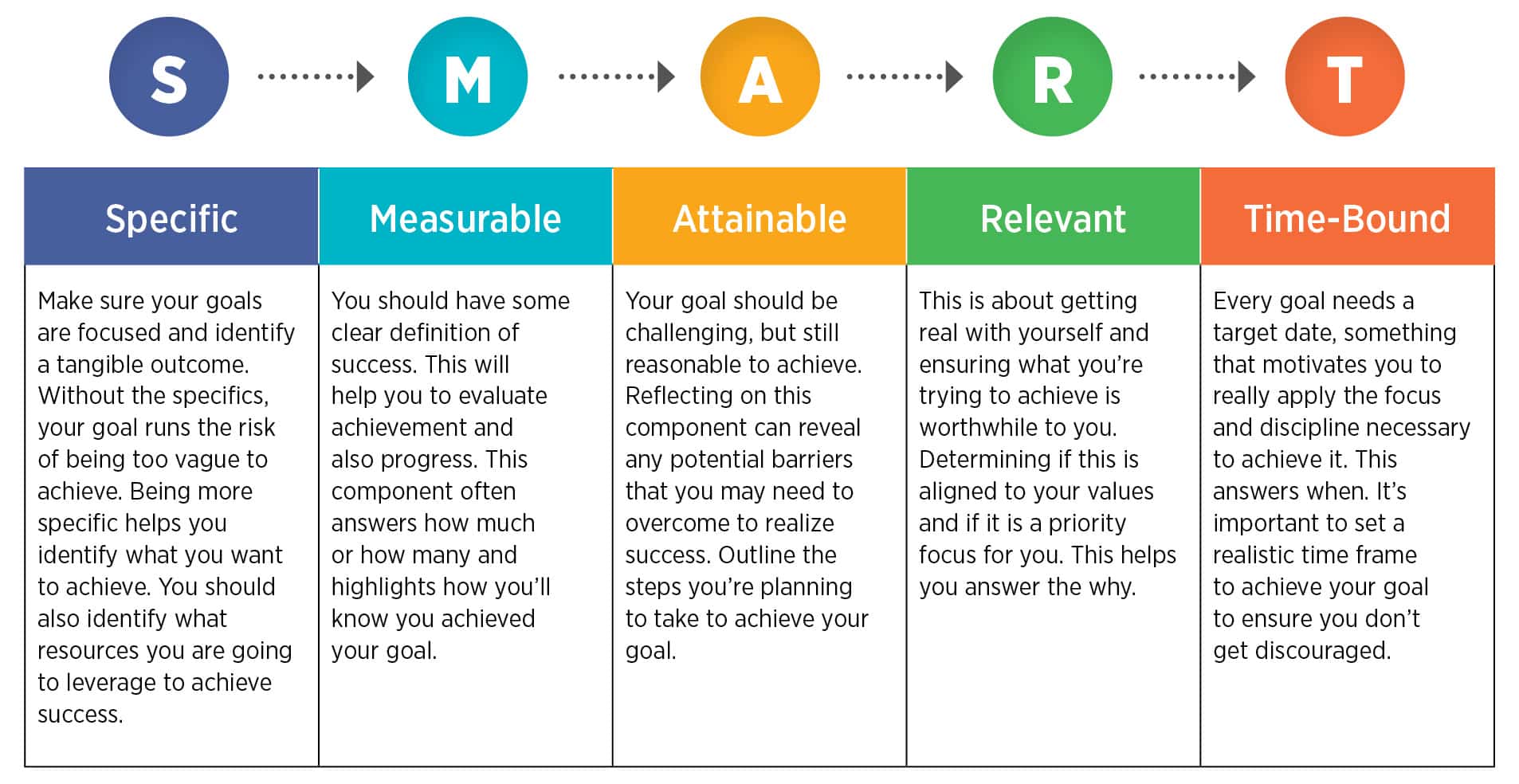
Define your target audience
Who are you creating content for? If you don’t know the answer to this question, most of your content will be like a shot in the dark. You won’t really know whether it’s relevant or not. There are several tried-and-true frameworks you can use to define who your target customer and audience is. The one you’ve probably heard of — and one of the most effective — is personas.
Customer or buyer personas give you insight into the needs, motivations, and goals of your target customer. When they’re done correctly, they can be extremely useful for developing content that is hyper-relevant and valuable to your audience, ultimately increasing your leads and sales.
Perform keyword research
Do you feel pretty confident that you know what your customers are searching for? If so, you’re not alone — this is a trap that many brands fall right into. No matter how well you know your customers, you can’t be sure about how their needs and behaviors translate into search terms without doing actual keyword research.
Trust me, you’ll be surprised at what you find when you begin researching keywords relevant to your industry, company, and customer. While you’ll probably find words and phrases you knew would be there, you’ll also find surprises that you never would have thought of otherwise. Surprises that create opportunities to develop new content your customers will love.
Fortunately, keyword research is easier than ever. I recommend checking out the free tools from Ahrefs and SEMRush to find out what you’re already ranking for and discover new keywords you can build into your strategy.
Here’s a quick demo of SEMRush’s keyword research tool to give you an idea of how it works:
Align content with the buyer journey
A big part of developing a strong content marketing strategy is understanding your buyer journey. And when it comes to understanding how to create content your customers love, this alignment is really important.
Here’s why: potential customers at each stage of the buyer journey are looking for different types of information. If you deliver the wrong information, you risk leaving them frustrated or, even worse, turning to other brands to find the solution they need.
Aligning your content with your buyer journey ensures that the right information gets to the right audience at the right time. Not only does this make users more likely to love your content, it makes them more likely to take the next step toward becoming a paying customer!
Here’s a great example of detailed content and buyer journey alignment:
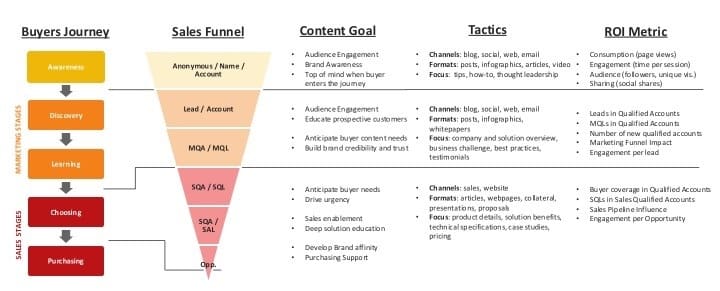
Always keep your target audience in mind
Obviously, if you want a piece of content to resonate – if you want that content to be truly awesome to consume – you have to think about the people for which you’re creating.
Content marketing leaders have indicated, time and time again, that the best way to create the most resonant content is to create with the audience in the back of your mind.That means listening to your audience, engaging with it to determine their interests, and listening to feedback on the pieces of content that you produce.
A great way to create audience-oriented content is by discovering industry trends and making content based on the trends you find. Producing content on topics that people are searching for keeps your work up to date and credible in the eyes of viewers, and also helps group your content under search terms that are being used most.
We know that our audience (hey, that’s you!) needs to be able to create content that will cut through the noise, grab the attention of prospects, and leave a lasting impression. That’s what awesome content does, so we wrote this piece to help you do that.
Awesome content is really important for inbound and outbound marketing strategies. Check out this video below that talks about how awesome content supports both inbound and outbound strategies for business growth.
Make it visual
Visual content includes images, videos, infographics and anything else that adds a visual component to your content. It increases content engagement across every channel, and it is pretty much an essential if you want to create content your customers will love.
Here’s what we mean:
- Blog articles with images get 94% more views than those without them
- Tweets with images receive 150% more retweets than text-only posts
- This year, the average person is predicted to spend 100 minutes daily watching video content
Visual content also just plays into the way our human brains work. A whopping 90% of the information transmitted to our brains is visual.
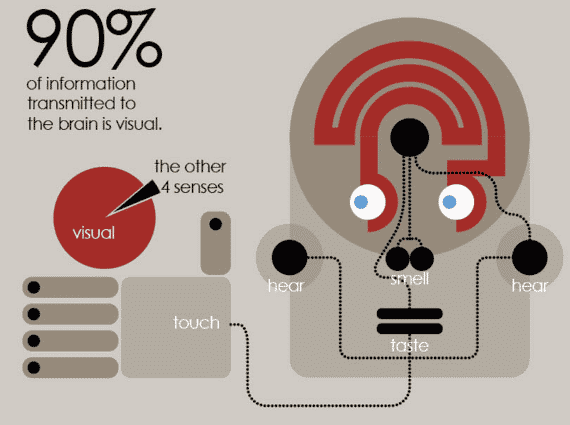
Adding visuals to your content doesn’t have to be difficult. Sure, some projects like longer infographics may require a design team. But for the most part, you can source images and videos from reputable sources online or create your own using free tools like Canva or your iPhone camera!
Be passionate about what you write
Once the audience is covered, it’s time to think of yourself. How can a blog post, a podcast, or a white paper be awesome if you don’t really believe everything you’re saying?
Have you slogged through a blog post that you didn’t want to write, didn’t really care about, and didn’t care if other people cared about it?
You write the words and you mull over some details, but the passion isn’t there. The creative drive isn’t there. You just write it for the sake of writing it – whether you needed to maintain a schedule or just needed a filler piece of content – and it doesn’t have much value for anyone involved.
Content that’s awesome to consume has to be awesome to write, first and foremost. If you don’t care about the subject matter, either find someone who does or change the topic of the post. Because if it is written haphazardly or without attention to detail, no one will extract any value from it.
Content that’s awesome to consume has to be awesome to write.
One of my favorite feelings at work is the one I get when I spend tons of time, both in the office and at home, perfecting a blog post that I really care about. After a while, I get the feeling that this piece of content is like my baby – I want it to look perfect, flow nicely, and read easily. I’ll spend as much time as possible to make sure that happens.
Being passionate is important – writing exclusively about things for which you don’t feel strongly is senseless. If it was awesome for you to write, it will likely be awesome for your audience to read.
Go off the beaten path
Personally, I find the most value in content that presents new ideas, new concepts, or new lines of reasoning with which I wasn’t familiar before.
My favorite writers are the ones that are creative enough to think outside the box, and brave enough to present those ideas to the public regardless of the reaction it might receive. Fresh content is far more enticing to readers than something they’ve read a thousand times, stay up to date on the latest trends and always keep your content new and exciting.
Teach me something new, and I’ll immediately appreciate it more than an articulate post that I feel like I’ve read 1000 times.
Involve others in the content creation process
It’s okay to admit that sometimes, you’re not the authority on a given subject. You, a content marketer, might not be the best person to write a blog post about quantum chemistry.
In that case, it is more than acceptable to find someone who is qualified to write on that subject, and seek their help in crafting your content. It’s good to get a new voice on your blog every once in awhile – it lightens your workload, gives someone else a chance to express themselves, and gives the reader exposure to a different voice with different opinions.
Even brainstorming new ideas with a group, or interviewing someone you admire could aide in the generation and development of awesome content!
Make it shareable to engage your community
Creating content is only half of the job done, the other half is engaging the community who reads, shares and interacts with your content. This helps you build a network of engaged followers and advocates for your brand.
People love to share content. Conversations are happening online about every topic and industry in the world, and content is a tool people use to start the discussion or contribute to it. People also love to share engaging content for fun. Buzzfeed is a prime example of how creating fun, casual, shareable content can drive traffic and brand awareness. Their listicle articles are a staple of internet culture.
A shareable piece of content is either educational or entertaining. This makes the process of consuming the content more fun and enjoyable. For example, many experts use personal stories, jokes, images and data visualizations to keep their readers engaged.
You can encourage the sharing of your content first by covering the topics they care about (but you know this already) and then by making it convenient for them to share. Two simple ways to do the latter are with social sharing buttons on your blog posts and by sharing your blog articles on your own social media pages.
Build on what’s working
Quick tip: you don’t have to keep reinventing the wheel to find new ways to create content your customers will love. Instead, monitor your success using Google Analytics, the analytics dashboard on your CMS, or your own data-driven process for measuring content performance to determine what your customers are enjoying most.
Once you know, find ways to keep creating that kind of content! If they’re loving your infographics, more infographics it is. If there is a certain topic or blog author your customers are responding to, it’s time to create more content around that topic or from that person.
This process can also work the opposite way. By monitoring your performance and frequently evaluating your content metrics, you can determine what’s working and what’s not working. Then, you can make the right adjustments in real-time to keep your content strategy fresh and effective.
Aim for quality over quantity
Many experts agree that you shouldn’t be creating content just for the sake of having content. It’s better to focus your time and effort on producing higher quality content, even if it means getting fewer pieces out. There’s already a lot of great content out there, so your content needs to be better to stand out from the noise.
Offer real value
Many experts agree that good content should add real value to readers. When people finish reading your content, they should be able to walk away with actionable steps and tips, new insights, or potential solutions that they can apply to the business challenges they are facing.
Here, the importance of in-depth content can’t be understated. Top performing content on average is longer, ranging anywhere from 1000 to 3000 words. Long-form posts are better for SEO as they offer more opportunities for backlinks. Well-researched, in-depth posts also offer more value to readers, which can help increase shares and establish your credibility in your space.
Repurpose your content
To get the most out of your content, several experts recommend using a variety of forms for each piece so your content can be consumed in the medium your audience prefers. For example, you can turn a blog post into an infographic, video, SlideShare or ebook. Recycling content allows you to share and promote your content across various social media sites and channels so it reaches more people.
Build influence
Invest time in building connections and relationships with influencers and experts in your space as they can help co-create, share and advocate for your content. Also become a regular contributor to other publications. By getting more influencers linking back to your content as well as publishing to other top sites, you can increase your credibility and authority, improve brand awareness and reach of your content.
Get feedback
Get feedback as soon as possible, both before and after you publish a piece of content. Use this feedback to improve your future content. You can also monitor other sites your audience visits, including your competitors, to track trends in their top performing content. This will give you a good idea of the content your audience is interested in.
Experiment
Always monitor what’s working and isn’t, and revise your content strategy accordingly. Use tactics that you know will work for your audience, but at the same time don’t be afraid to try something new. Those creative ideas may help your content stand out from the crowd and attract people’s attention.
Venngage asked 46 content marketing experts to share their tips for creating great content (in full disclosure, I am one of them!)

How to Scale Up Your Content Creation to Match Business Growth
Creating content for your website is a rewarding process. A labor of love, if you will. The more you do it, the better you get, and the more customer traffic you get.
While your business grows with your hard work, you will need to expand every aspect of your operation to continue smashing through your ceiling. Eventually, you’ll have to widen your content creation efforts and scale up your once small operation into a larger facet of your content marketing efforts.
Shift4Shop.com says:
Content marketing costs 62% less and generates approximately three times the volume of leads and 80% of executives and business owners prefer to receive information about a company through articles rather than advertisements.
Those are big numbers that cannot be ignored when considering the future of your digital marketing strategy. So, how do you scale up your content creation process? Here’s a quick video from Ahrefs to get your feet wet:
Here are some of the best tips for scaling up your content creation for your growing business (without sacrificing the quality):
Hire the right people
Content creation is difficult. Pumping out ideas and information in an engaging way is a learned skill that takes time to develop. If you want to scale up your content creation correctly, you need to hire blog article writers.
Writing blog articles can take over 15 hours a week. Using either freelancers or contractors to create your content accomplishes two things.
First, you’re buying expertise. Seek out writers who have either written for marketing or have experience in improving SEO with content writing from other fields. Many experienced content writers already know the formula for writing the perfect blog post.
Second, you’re buying the manpower. Making sure you can find writers that can work as a team is crucial to your content scaling success. The more team-oriented, the better!
Here are some specific things to look for when searching for your next content writer:
- Great track record
- Portfolio of past work
- SEO Experience
- Deadline-driven
If you can find someone that satisfies these requirements, hand them a W-2 and get crackin’!
Establish a workflow for content production
So now you’ve got your writers, and hopefully along the way they either grew in the company or you picked up some excellent marketing managers. The next step is organization.
What’s the saying? Trust the process.
That’s all well and good – but to trust the process you have to build the process from the ground up.

Source: Gathercontent
Let’s start with the basics. There needs to be someone planning the content. This is usually done with you and your marketing manager, brainstorming ideas for the site.
After the content is planned and scheduled, your writers will produce the content. This writing will be done with standard SEO writing practices in mind and grab the attention of your prospective clients.
The completed content should then be overseen by your marketing manager again – making edits and storing the finished pieces to be scheduled out (like onto a content calendar!). Then the fun part, publishing the content!
If you haven’t been already, you should be publishing your content across all of your social media channels in your brand voice to give your traffic that extra boost.
In the end of the process, the marketing manager should be measuring what’s doing well and what could use some improvement. Having this steady flow keeps things simple and efficient, leaving more time to worry about the numbers and less time worrying about the logistics.
Reuse & recycle high-performing content
We didn’t forget about all that hard work you’ve already put in! Your best performing articles don’t need to sit on your website rotting to the webpages of time.
Articles that once brought in great traffic eventually fall out of touch with the ever changing world of search engine optimization. Not to mention, the actual content can become irrelevant to today’s world.
As we’ve mentioned in our SAP case study, Michael re-purposed whitepapers and executive keynotes into his first couple of dozen articles on the SAP blog he launched. And y0u can do the opposite as well (turn articles into videos). Our client Nutanix turns all of their articles on their Forecast magazine into podcasts. You can see one example here.

Having your writers restructure your content into different forms can be the gift that keeps on giving. Even a quick freshening up of an old article from a few years ago with modern information can be the makeover your content needs to be back on top of the page!
This practice can extend your content’s lifespan and in turn your content marketing ROI (or ROMI).
Be willing to adapt
This one is easier said than done. Scaling up a part of your marketing strategy this big isn’t exactly an easy task. It will take time and restructuring as you continue the process.
Just don’t forget, this is why you’ve set up an efficient system to analyze and measure the results of your content marketing campaign. Not to mention there’s tons of digital marketing tools to assist you in the process.
Using measurement tools like Google Analytics can help identify where your content is thriving and where it needs some change. Remember, if your content marketing mission statement is to provide quality content, the traffic will come!
Boost Customer Engagement with Great Content
Creating content your customers love takes time and experience. The team of writers and SEO experts at Marketing Insider Group can deliver you customized, SEO-driven content every single week that’s sure to deliver results.
Check out our SEO Blog Writing Service to get started or schedule a quick consultation to learn more.






